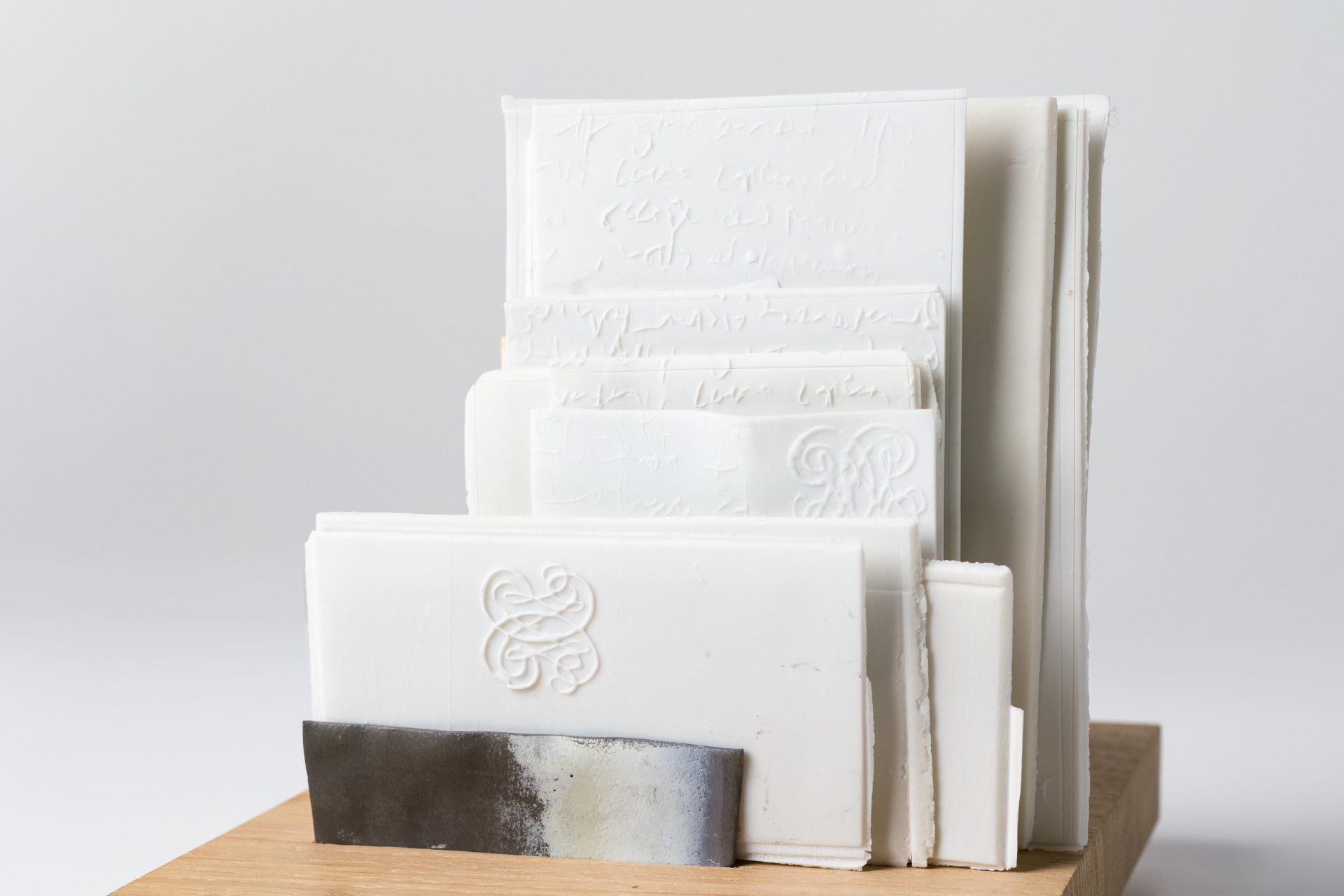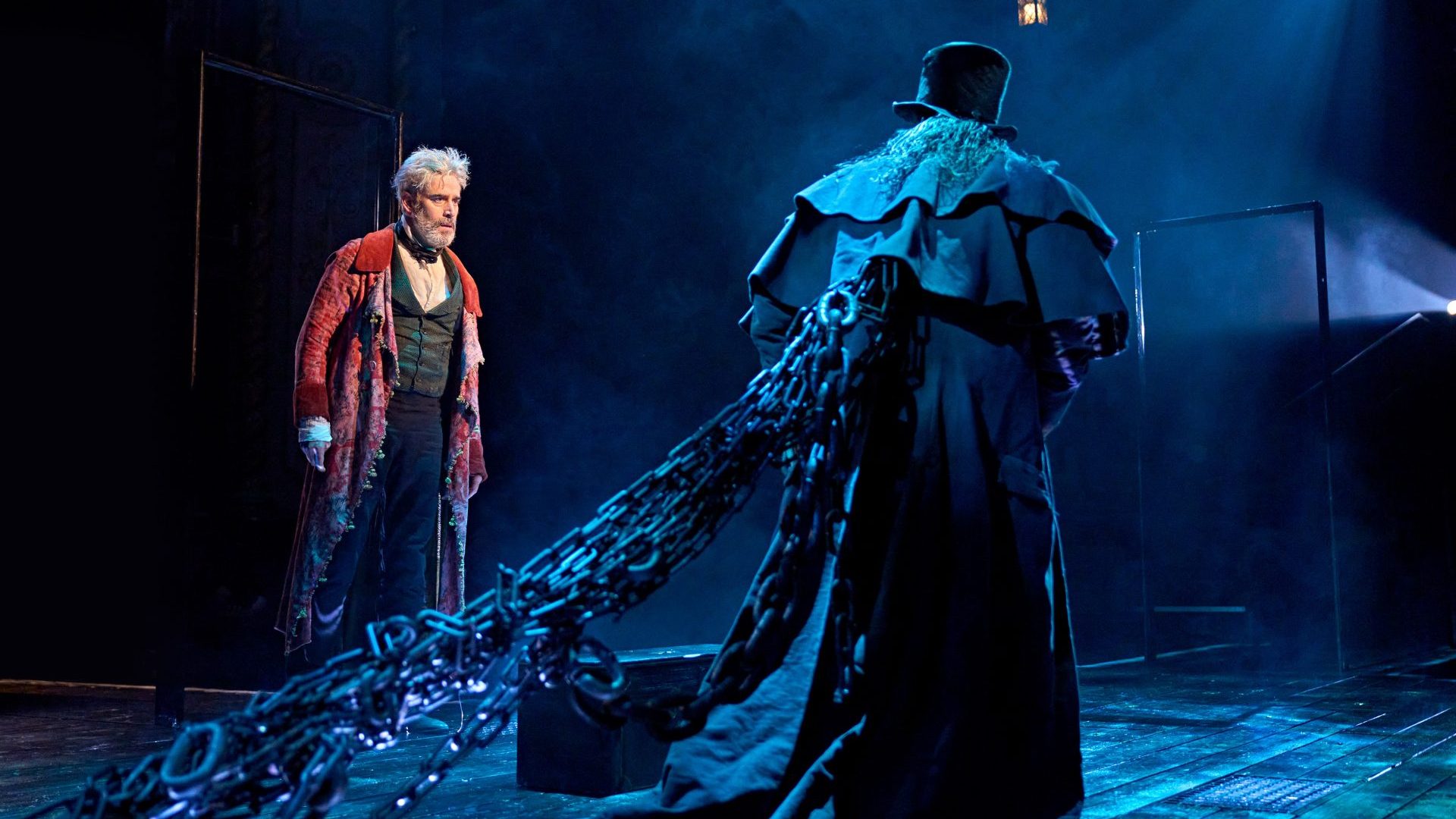“I hate the word intervention,” says the potter Edmund de Waal, sitting at a large white table in his spacious, overwhelmingly white South London studio. His objection to this egregious scrap of art world terminology rings true: after all, de Waal’s work is characterised by its discretion. His spare, monochrome pots are often barely there at all, arranged into rhythmic groupings in whose cadences we can sometimes catch the whispers of walls and the fleeting stirrings of old ghosts.
When we meet, de Waal is in the final stages of preparing the exhibition now open at the Musée Nissim de Camondo in Paris. It was inspired by his latest book, Letters to Camondo, in which he addresses a series of fictional letters to the Jewish collector Count Moïse de Camondo, who built this house on the Rue de Monceau, modelling it on the Petit Trianon at Versailles.
Readers might have encountered Moïse de Camondo in The Hare with Amber Eyes, de Waal’s 2010 memoir, in which he tells the story of his own Jewish forebears, the Ephrussi family, who, like the Camondos, were devastated by anti-semitism.
In Belle Époque Paris, the Ephrussis lived close to the Camondos, their lives entwined through friendship, kinship and business. In telling the story of the Camondos, de Waal reflects on, and adds to, his own family story.
The events of the 1930s and 1940s reverberate through his life and that of his father, who, as a child, sought refuge in this country with his family. Now aged 91, he helps at a refugee centre and can finally apply for the Austrian citizenship that was stolen from him all those years ago.
In his letters, de Waal writes of identity and belonging, assimilation and difference, memorialising and letting go, and the way that objects and collections, like words on a page, can articulate the most intimate and complex thoughts and feelings.
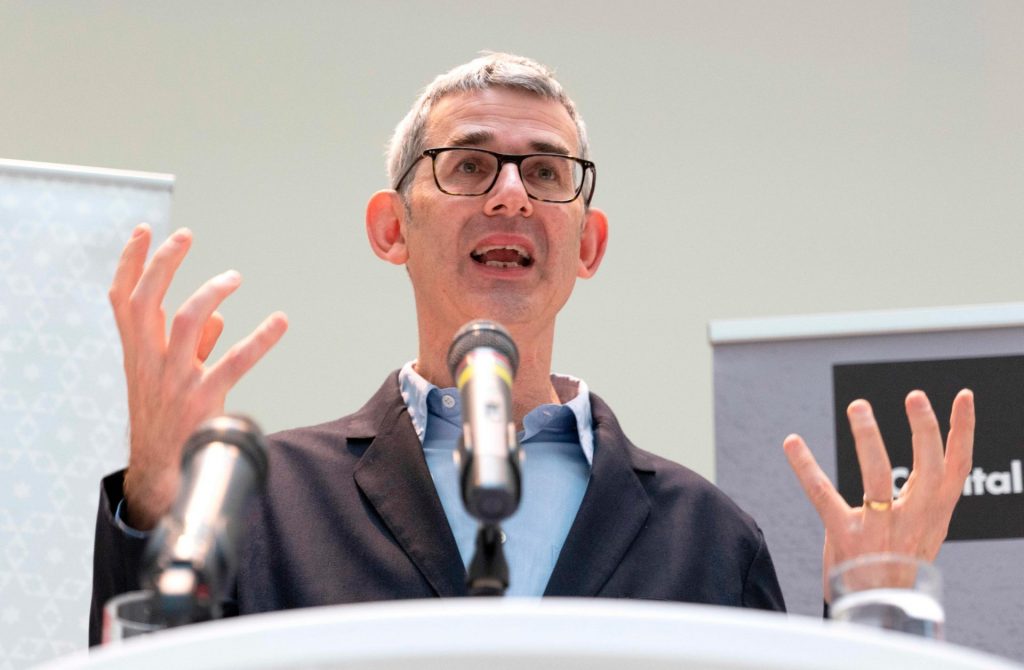
The Musée Camondo is itself a memorial to Moïse’s son Nissim who died in the First World War, aged 24. When Moïse himself died in 1935, he left the house – previously intended to be a gift for Nissim – to the French state.
The bequest was made on the strict understanding that the house and its collection – described in a press statement as evoking “the perfect taste and the sumptuous atmosphere of the second half of the 18th century” – would never be altered. Time was stopped, the house kept “admirably maintained and meticulously clean” in line with the count’s instructions, as if in expectation of Nissim’s return.
Breaking the terms of the bequest was “a singular challenge”, according to the museum’s director, Olivier Gabet, and de Waal envisaged the exhibition in the slightest of terms, “so that when you went into the house, you might not find an exhibition at all”.
The artist’s discreet additions disclose an understanding between the two men, and their shared “pleasure of putting things next to each other.” They also recognise that, in its undisturbed state, the house left unacknowledged the tragedy that befell the Camondo family only a few years after the count’s death: his daughter Béatrice, her ex-husband Léon and their two children were all murdered by the Nazis.
Paradoxically, it is by introducing breakage that de Waal has found equilibrium, marking loss with glassless vitrines containing fragments of lead, oak and porcelain, the last a material with particular symbolic weight. De Waal’s own staple material ties him to Moïse, whose porcelain room is the crowning glory of the house, embodying refinement, civility and, above all, Frenchness. For de Waal, it resonates further still, for, despite its fragility, it is incorruptible: “You can break it but you cannot destroy it.”
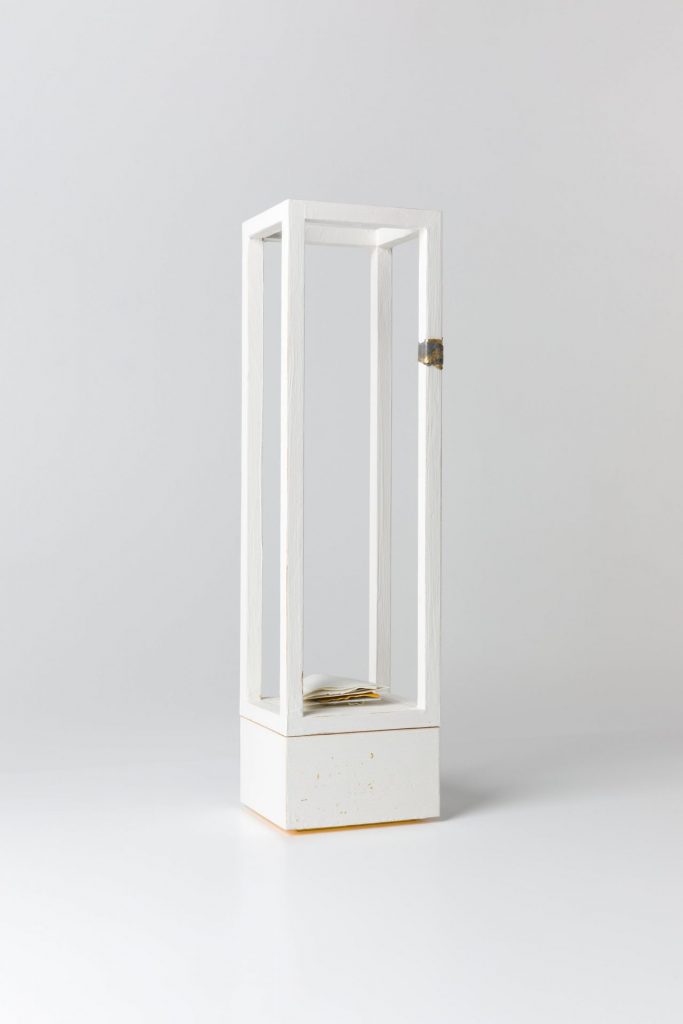
In his words, and actions, de Waal proposes an alternative journey through grief, that resists the pressure to move on, to make perfect. He writes: “You cannot mend this house or this family. You can mark some of the broken places. You can mark them properly and with dignity, with love. And then move away again, let the house be.”
It’s a philosophical position, analogous to the Japanese art of kintsugi, in which broken porcelain is mended with lacquer and gold, so that damage and loss are marked, not hidden, incorporated into the object’s history and identity.
De Waal makes reference to kintsugi in his exhibition, a tiny band of gold marking a vitrine and the corner of one of the Hornton stone benches he has placed in the palace courtyard.
The house is a symbol of struggle too, its quintessentially French contents covering the Camondo family’s history as they did their best to assimilate and survive.
Both the Ephrussis and the Camondos arrived in Paris in 1869, the former from Odessa, the latter from Istanbul. The move represented, writes de Waal, “a chance to bring your family to secular, republican, tolerant, civilised Paris and build something with self-confidence, something with appropriate scale, something public.”
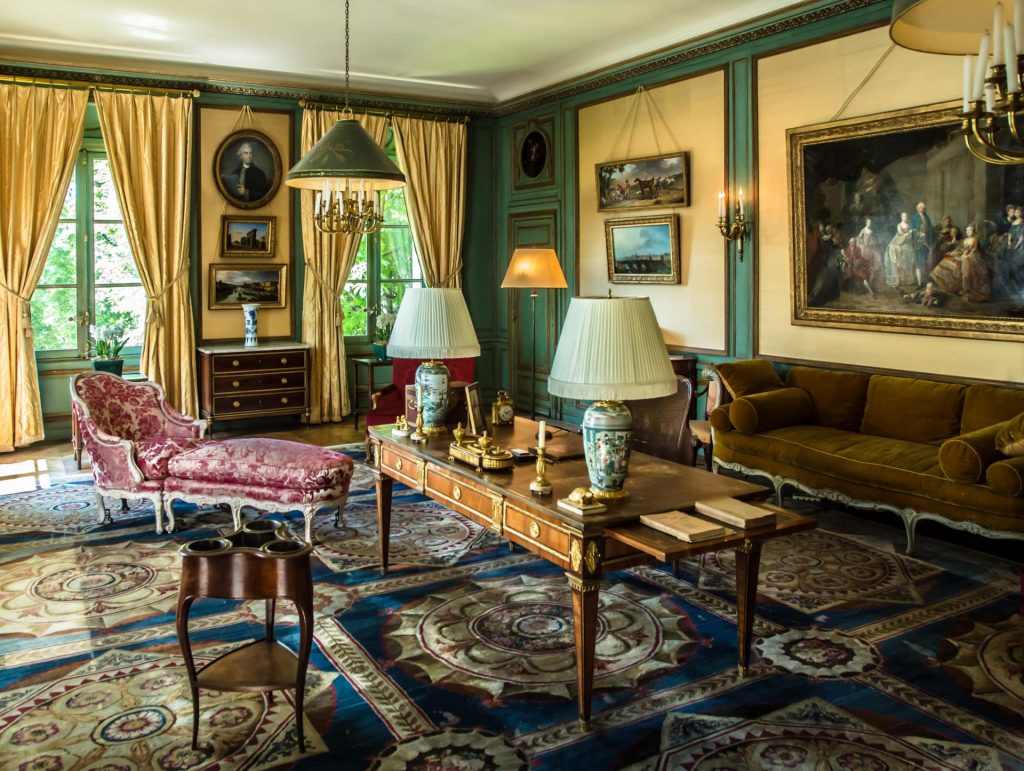
Paris was a long way from the violence and poverty of the shtetl, or the factional conflicts of Istanbul, but the Dreyfus Affair brought a country already simmering with anti-semitism to fever pitch.
The scandal centred on the wrongful conviction of Captain Alfred Dreyfus for treason in 1894, and cut so deep into the national psyche that it has remained a powerful tool in the armoury of the French far right.
Chief among those whipping up anti-Jewish feeling in France was Edouard Drumont, founder of the Anti-Semitic League of France and author of the wildly successful La France Juive, first published in 1886.
The book sought to establish a racial difference between Jews and non-Jews, and fuelled fears of a Jewish financial “conspiracy”, naming the Camondos and the Ephrussis among the “membres de la finance internationale”.
According to Drumont, writes de Waal: “Every Jew is responsible for every other Jew, culpable. And treacherous. L’affaire Dreyfus makes us all cousins.”
Count Moïse de Camondo’s Francophile house was a powerful statement of belonging.
But for Drumont and his ilk, such attempts at assimilation were merely proof of treachery, and the Camondo family were denigrated as “arrivistes, parvenus, nouveaux riches, profiteers, nouveaux roturiers, social climbers… as Jews aspiring to the veneer and polish of the gratin and failing to disguise their origins, Constantinople, long beards and robes, Oratory at home, Etc.”
De Waal is too subtle to spell out cause and effect, but in 1910, Moïse, his marriage over, demolished the house built by his father, replacing it with the more restrained building that stands there now.
He went further still, and sold or gave away all traces of his past. “You donate the ornamental plaque for the torah given to you on your barmitzvah, and the rimmonim for the torah scroll, in engraved gold, and the lamp of reconsecration given by David Sassoon to the Camondo family in 1864. You give the coffre et rouleau de torah with its Hebrew inscription… to Temple Buffault, and four pieces of Oriental and Dutch silverware used in Jewish worship, to the Musée de Cluny.”
Moïse erased his material family history as assiduously as he archived that which he wished to preserve, the house itself an unfolding story of connecting rooms, locked doors and desks with concealed panels and secret drawers.
De Waal adds another (often secret) layer to the house and its story, placing pots in cupboards, or fragments of porcelain in drawers that will never be opened.
With his Istanbul roots carefully hidden from view, Count Moïse de Camondo was flawlessly French.
The archives are testament to this, and receipts, lists, letters and menus itemise the societies and committees to which he belonged, the lunches he gave, his famous cellar, his love of hunting. There are documents for everything, writes de Waal: “Manifests for cargo, manifests for people as cargo. I find the manifests for your daughter. For your son-inlaw. For their children.”
By setting about trying to “re-inhabit the house with things that matter to me, or mattered to Moïse de Camondo,” de Waal continues the conversation begun in his letters, which convey the agony of disbelief that, in the end, Moïse’s impeccable Frenchness, the death of his son in the service of his country, and the gift of his house to the nation, could not save his family from annihilation.
Moïse’s only surviving child, Béatrice, was 50 when she was murdered on January 4, 1945. Her ex-husband Léon was murdered on May 12, 1944, aged 49. Their daughter Fanny was killed on December 31, 1943, aged 22, and their 20-year-old son Bertrand on March 22, 1944. All perished at Auschwitz-Birkenau.
Moïse’s ex-wife Irène survived and when she claimed the Camondo estate on behalf of her daughter Béatrice, she recovered La Petite Irène, Renoir’s portrait of her, painted when she was eight.
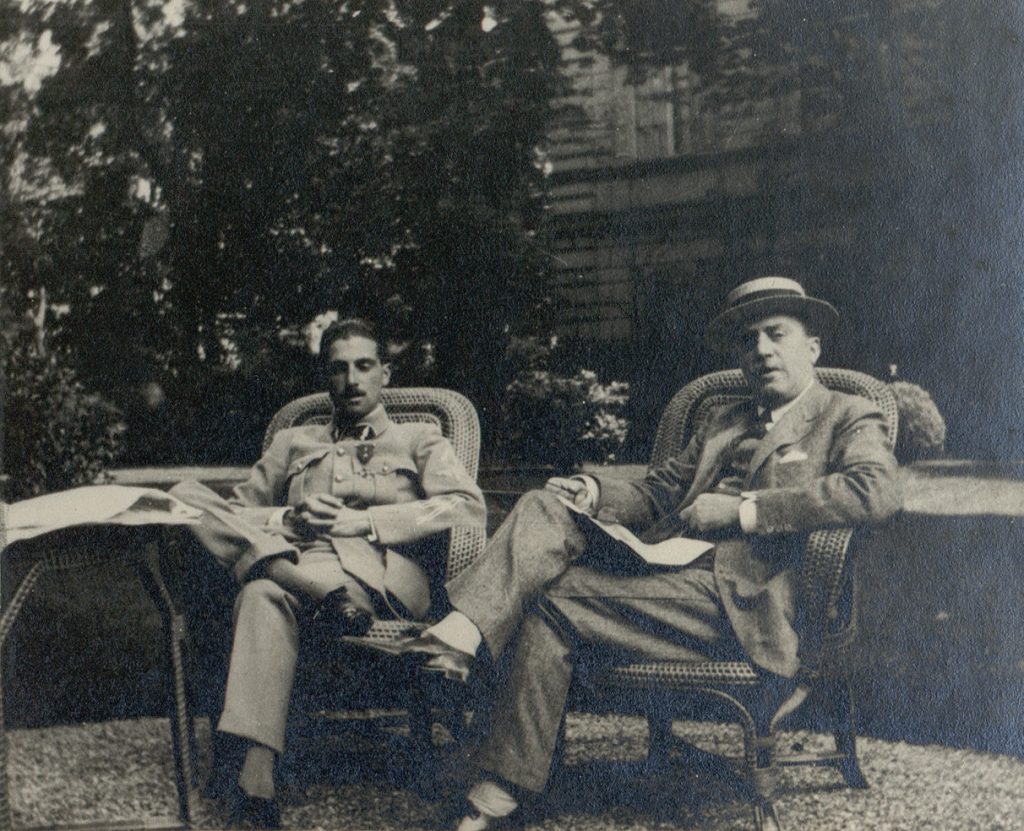
Renoir also painted Rose et Bleu, a portrait of Irène’s younger sisters, Alice and Elisabeth.
Rose et Bleu now hangs in the Museu de Arte de São Paolo – the girl in the blue dress is Elisabeth, who died while being deported to Auschwitz in March 1944.
La Petite Irène is one of Renoir’s most celebrated portraits, and was stolen by Hermann Göring.
When Irène finally recovered it, she sold it, and, by a further cruel twist, it found its way into the hands of the industrialist Emil Georg Bührle, whose company, Oerlikon, supplied arms to the Nazis. Today, La Petite Irène hangs in the Foundation Bührle in Zurich.
As de Waal writes, “people slip into art and are lost.”
How we recover them and how best to honour their memories is the question at the heart of his book.
The Letters to Camondo exhibition is at the Musée Nissim de Camondo, 63 Rue de Monceau, Paris, until 15 May 2022
Letters to Camondo by Edmund de Waal, published by Chatto & Windus, h/b £14.99


